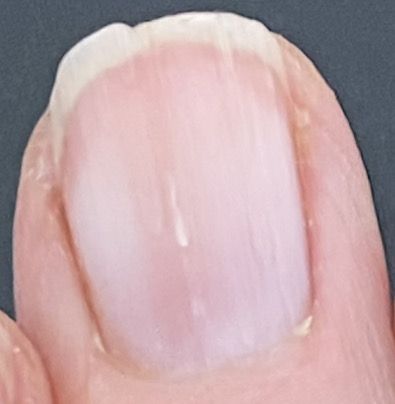
Our nails do more than enhance the beauty of our hands; they serve as insightful indicators of our overall health. Changes in nail color, texture, or shape can signal underlying health issues that might require attention.
Understanding Nail Anatomy
Before delving into specific nail changes, it’s essential to understand the basic structure of a nail:
- Nail Plate: The visible hard part of the nail.
- Nail Bed: The skin beneath the nail plate.
- Cuticle: The tissue that overlaps the nail plate at the base.
- Lunula: The whitish, half-moon shape at the nail’s base.
Common Nail Changes and Their Potential Implications
- Yellow Nails
- Appearance: Nails become thickened and yellowish.
- Possible Causes: Fungal infections, respiratory conditions, or the rare Yellow Nail Syndrome, which can be associated with lymphedema and respiratory diseases.
- White Spots (Leukonychia)
- Appearance: Small white spots or lines on the nail plate.
- Possible Causes: Minor injuries to the nail, allergic reactions, fungal infections, or zinc deficiency.
- Pitting
- Appearance: Small depressions or pits on the nail surface.
- Possible Causes: Often associated with psoriasis or other systemic conditions like alopecia areata.
- Clubbing
- Appearance: Enlarged fingertips with nails curving around the fingertips.
- Possible Causes: Lung diseases, cardiovascular issues, or inflammatory bowel disease.
- Spoon Nails (Koilonychia)
- Appearance: Nails that are soft and shaped like a spoon, often able to hold a drop of liquid.
- Possible Causes: Iron deficiency anemia or hemochromatosis.
- Beau’s Lines
- Appearance: Horizontal grooves or indentations across the nail.
- Possible Causes: Severe illness, malnutrition, or chemotherapy.
- Terry’s Nails
- Appearance: Nails appear white with a characteristic “ground glass” appearance and no lunula.
- Possible Causes: Liver disease, congestive heart failure, or diabetes.
- Onycholysis
- Appearance: Separation of the nail from the nail bed, leading to a white or yellowish appearance.
- Possible Causes: Injury, fungal infections, or thyroid disorders.
When to Consult a Healthcare Professional
While some nail changes are harmless and may result from minor injuries or aging, others can indicate more serious health issues. It’s advisable to seek medical attention if you notice:
- Persistent changes in nail color, shape, or thickness.
- Bleeding around the nails.
- Swelling or pain around the nails.
- Nails detaching from the surrounding skin.
Maintaining Healthy Nails
To keep your nails healthy and potentially prevent some of these issues:
- Practice Good Hygiene: Keep nails clean and dry to prevent infections.
- Avoid Biting Nails: This can damage the nail bed and introduce bacteria.
- Moisturize: Regularly apply lotion to nails and cuticles to prevent dryness.
- Limit Exposure to Harsh Chemicals: Wear gloves when using cleaning products.
- Maintain a Balanced Diet: Ensure adequate intake of vitamins and minerals essential for nail health, such as biotin, iron, and zinc.
Conclusion
Your nails can provide valuable insights into your overall health. By paying attention to changes in their appearance, you can detect potential health issues early and seek appropriate care. Remember, while nail changes can be indicative, they are not definitive diagnoses. Always consult with a healthcare professional for an accurate assessment.





